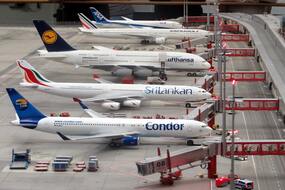THR's opinion
Travel Bubbles: A Viable Solution to Restart Travel, Tourism, and Hospitality Industries?
 Travel bubbles, otherwise known as "travel bridges" or “corona corridors” emerged during the pandemic as temporary agreements to allow citizens to travel between two or more countries without the need for quarantine or other restrictions.
Travel bubbles, otherwise known as "travel bridges" or “corona corridors” emerged during the pandemic as temporary agreements to allow citizens to travel between two or more countries without the need for quarantine or other restrictions.
While this appears practical in theory, what does a deeper analysis of the tactic reveal about the broader viability, benefits, and potential downsides?
Find below the key takeaways from a recent internal THR Tourism Industry Advisors workshop on the travel bubble strategy.
The Concept
The travel bubble concept was initially driven by its potential economic impact, requiring the countries signing the agreement to share a similar approach towards travel management and their ability to control the virus through extensive testing, contact tracing and isolation practices.
An example of a (so-far) successful travel bubble was agreed to by Taiwan and Palau, with the first flight returning home with passengers who visited Palau under the mutual travel bubble arriving in Taiwan on August 14th.
The Benefits – A Turning Point of Hope for Destinations
- The most obvious benefit of travel bubbles is as a channel to support countries restarting facets of their economies such as hotels and restaurants that were decimated by Covid lockdowns.
- In the long-term, travel bubbles may encourage the generation of more durable cultural and commercial ties between nations that can prove mutually beneficial for countries that depend heavily on tourism, potentially engendering additional changes such as permanent visa-free travel.
- Travel bubbles which allow citizens to travel freely without quarantine measures support a renewal of psychological safety for a populace still unsure of public spaces or long distances from home after the initial moratorium on movement.
The Challenges – Many Hurdles to Overcome
- Travel bubbles may lead to an inadvertent increase in Covid cases through export from one partner country, consequently increasing the burden on already-strained health systems. New Zealand, for example, cancelled a planned travel bubble after a new wave of infections in Australia.
- Absent a stable framework for travel-bubble implementation, countries run the risk of confusing an already-exasperated populace frustrated with changing Covid policy.
- The global criteria by which travel bubbles should be established between countries is still uncertain. Covid case monitoring, for example, is inconsistent both within and between countries, and often includes volatile data, leading to sudden lapses in multi-country agreements. Hong Kong and Singapore ended discussions on a potential travel bubble due to differences in epidemic-management strategies.
- On a longer time spectrum, friction between two countries over a potential or existing Covid bubble may erode existing or future bilateral agreements.
In Sum
• Travel bubbles may be a useful innovation to jumpstart both the tourism and other sectors for countries.
• A well-executed bubble may lead to a positive economic impact over both a short- and potentially long-term horizon.
• However, a clear strategy, strong policy alignment, and effective execution, particularly around Covid-management strategies and behavioral expectations are imperative to ensure a viable solution.